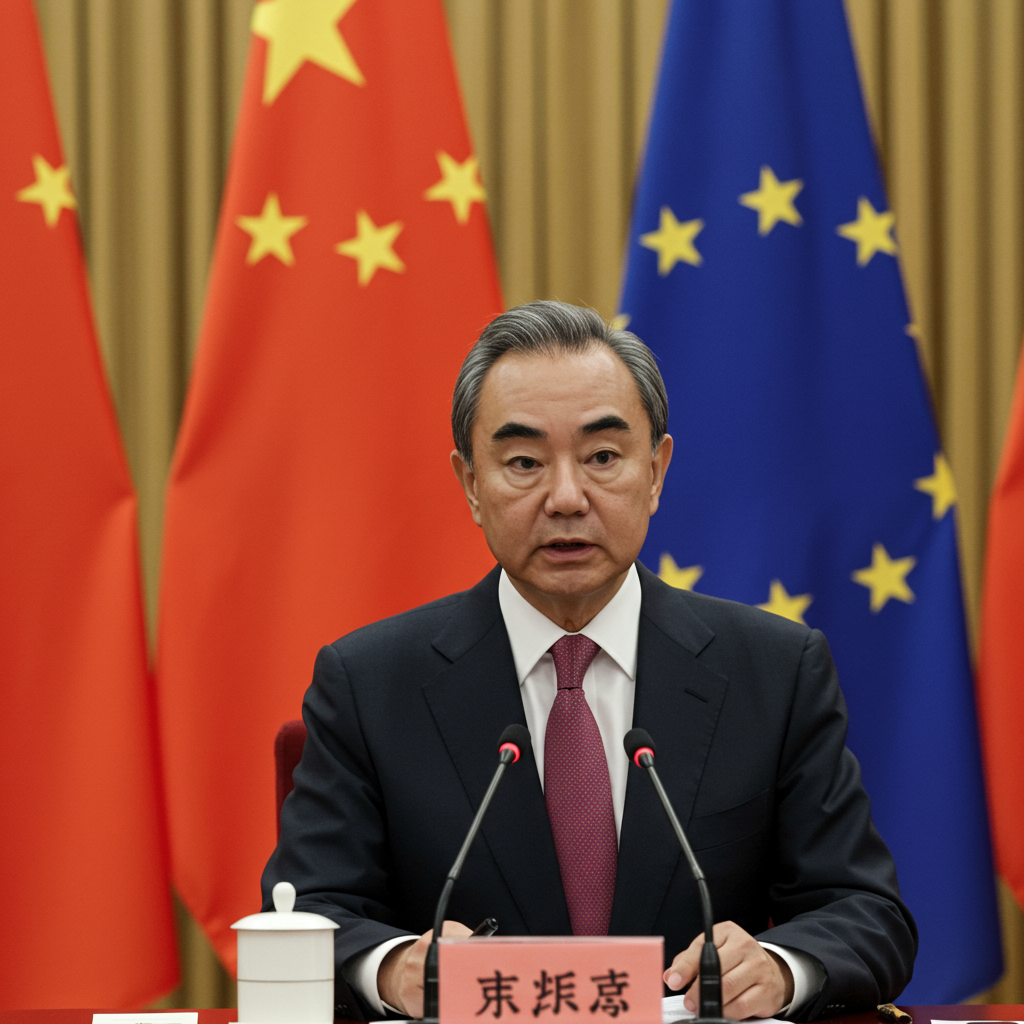A surprisingly robust U.S. labor market report for June 2025 has dramatically reduced expectations for an imminent interest rate cut by the Federal Reserve. The data, showing significant job gains and a lower unemployment rate than anticipated, signals unexpected strength in the economy. This resilience gives the central bank ample reason to maintain its current borrowing costs, pushing back against calls for immediate stimulus. The report underscores the Fed’s commitment to gathering more economic data before making any policy shifts, particularly in the face of ongoing economic uncertainties and political pressure. For American households and businesses, this likely means higher borrowing costs will persist longer than many had hoped, impacting everything from mortgage rates to business loans.
Unexpected Job Growth Fortifies the Fed’s Stance
The June jobs report delivered a clear message: the U.S. job market remains remarkably sturdy. According to the latest figures, employers added a notable 147,000 positions last month. This number exceeded forecasts from economists, who had predicted a smaller gain.
Adding to the positive outlook, the national unemployment rate decreased to 4.1 percent in June. This was a tick down from the previous month and marked the lowest point since earlier in the year. Economists had generally expected the rate to hold steady or rise slightly. Upward revisions to job figures from April and May further solidified the picture of sustained labor market health heading into the summer.
This performance provides strong support for the Federal Reserve’s current monetary policy approach. The central bank operates with a dual mandate: fostering maximum employment and keeping inflation around its 2 percent target. With the labor market showing such vitality, the Fed sees less immediate need to lower interest rates to stimulate hiring or economic activity. Experts widely agree the data confirms the job market’s resilience, defying some indicators that had suggested potential weakness. “There is no urgency,” noted one portfolio manager, highlighting the Fed’s ability to delay rate cuts.
Where the Jobs Are Appearing
While the overall numbers painted a bright picture, job gains were concentrated in specific sectors. Government employment saw a significant boost in June. This was largely driven by hiring at the state and local levels, particularly within education.
The healthcare sector also continued its trend of solid growth. It added a substantial number of positions, reflecting ongoing demand in that field. Despite these areas of strength, some parts of the labor market faced headwinds. The federal workforce, for instance, continued to shrink. Earlier in the year, massive federal job cuts were estimated to have significantly impacted overall government employment figures.
Navigating Inflation and Tariff Headwinds
Beyond the labor market, the Federal Reserve is closely monitoring inflation. While inflation has cooled significantly from its peak, it remains slightly above the Fed’s 2 percent target. This persistent, albeit lower, inflation rate, combined with the strong jobs data, reinforces the Fed’s cautious approach to monetary policy.
A key factor influencing the Fed’s outlook is the potential impact of trade policy, specifically proposed tariffs. There is significant uncertainty surrounding the implementation of these tariffs. While some are currently on pause, many are scheduled to take effect soon unless trade deals are reached.
Federal Reserve Chair Jerome Powell has publicly acknowledged the potential negative effects of tariffs. He has suggested that they could both impede overall economic activity and contribute to rising prices during the summer months. This potential for tariff-driven inflation is a crucial consideration for the Fed. Experts believe this uncertainty partly explains why the central bank has held off on lowering rates earlier, opting instead to assess how these policies unfold and impact the broader economy. One economist suggested that tariff-driven inflation might peak later in the year, potentially creating space for a rate cut towards year-end to support growth.
Political Pressure vs. Data-Driven Decisions
The Federal Reserve operates independently, but it has faced significant political pressure regarding interest rates. President Trump has been vocal in his demands for the central bank to lower borrowing costs swiftly and substantially. He has argued that higher rates are detrimental to the economy and have a financial cost for the country, particularly concerning servicing the national debt, which already costs around a trillion dollars annually.
However, Chair Powell has consistently emphasized a data-dependent approach. He has stated that as long as the economy remains in “solid shape,” the central bank finds it “prudent” to wait. The strong June jobs report provides tangible data that supports this patient strategy. It reinforces the argument that the economy is resilient enough to withstand current rate levels while policymakers gather more information on economic evolution, including the effects of trade policies.
Market Reacts: Stocks Surge, Yields Jump
The strong jobs report triggered a significant reaction in financial markets, albeit a mixed one depending on the asset class. U.S. stock markets celebrated the sign of a robust economy. Major indices like the S&P 500, Dow Jones Industrial Average, and Nasdaq composite all saw notable gains, with the S&P 500 reaching new record highs shortly after the report’s release.
The positive market sentiment was broad, with gains seen across various sectors. Companies sensitive to consumer confidence and spending performed well. Bank stocks also saw strong performance. This reaction underscores investor confidence in the underlying strength of the U.S. economy as suggested by the hiring data.
Conversely, the bond market reacted sharply, with yields surging higher. The yield on the benchmark 10-year Treasury bond and the more Fed-sensitive two-year Treasury yield both saw significant increases. This rise in yields is a direct reflection of investors scaling back their expectations for near-term Federal Reserve rate cuts. Data from futures markets dramatically showed the probability of a rate cut at the Fed’s upcoming meeting plummeting to a minimal level after the report.
The increased cost of borrowing reflected in rising yields had a negative impact on interest-rate sensitive sectors. Homebuilders, for example, saw their stock prices decline. This sector typically benefits from lower mortgage rates, which become less likely when overall interest rates remain elevated.
What the Jobs Report Means for Borrowing Costs
For American consumers and businesses, the takeaway from the solid June jobs report and the subsequent market reaction is clear: borrowing money will likely remain expensive for the foreseeable future. The reduced probability of a Federal Reserve rate cut means that interest rates on various financial products will likely stay at current or potentially even higher levels.
Mortgage rates, which had already been trending upward, are expected to remain elevated. This impacts housing affordability and the decisions of potential homebuyers. Similarly, the cost of financing cars, business investments, and other loans will continue to reflect the prevailing higher interest rate environment.
While a robust job market indicates economic health and provides job security for many, the persistence of higher borrowing costs presents a challenge for individuals and companies reliant on credit for major purchases or expansion. The path forward for interest rates will now heavily depend on upcoming economic data, particularly readings on inflation and continued labor market performance, as the Fed maintains its patient, data-driven stance.
Frequently Asked Questions
What did the latest U.S. jobs report show, and why does it impact Fed rate cuts?
The June 2025 U.S. jobs report showed that employers added 147,000 jobs, and the unemployment rate fell to 4.1%. Both figures were stronger than economists predicted. This indicates unexpected resilience in the U.S. labor market and broader economy. Since the Federal Reserve considers the strength of the job market when setting policy, this solid report suggests the economy does not need immediate stimulus through lower interest rates, making rate cuts less likely in the near term.
How does the U.S. trade situation and potential tariffs play into the Fed’s decision-making?
President Trump’s proposed tariffs and the resulting trade uncertainty are significant factors for the Fed. Fed Chair Jerome Powell has noted that tariffs could slow economic activity and potentially increase inflation. The Federal Reserve is monitoring these potential impacts closely. This uncertainty adds another layer of caution for the Fed, as they want to understand how tariffs will affect the economy and prices before making decisions on adjusting interest rates.
What does the reduced likelihood of Fed rate cuts mean for borrowing costs for consumers and businesses?
A lower probability of Federal Reserve interest rate cuts means that borrowing costs for both consumers and businesses are likely to remain elevated. Interest rates on mortgages, car loans, business loans, and other forms of credit tend to track the Fed’s policy rate and Treasury yields. With the strong jobs report pushing back expectations for lower rates, these borrowing costs are expected to stay high, impacting affordability for major purchases and financing costs for companies.
Conclusion
The June 2025 jobs report delivered a clear signal of strength in the U.S. labor market, exceeding forecasts and driving the unemployment rate lower. This surprising resilience has bolstered the Federal Reserve’s argument for maintaining its current interest rate policy, significantly diminishing the likelihood of a near-term rate cut. While the economy shows pockets of vigor, particularly in hiring, it continues to navigate complexities including potential tariff impacts, inflation concerns, and political pressures. As the central bank sticks to its data-dependent approach, the path of interest rates will hinge on future economic data, ensuring borrowing costs remain a key factor for consumers and businesses alike in the coming months.


